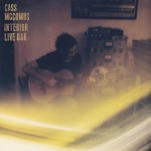Savor vs. Devour: Netflix Announces Their “Binge Scale”
Images courtesy of NetflixThe concept of binge-watching is a relatively new phenomenon, one we can attribute to the recent, tremendous popularity of online streaming services like Netflix, Hulu and Amazon Prime that allow viewers to consume as many episodes in one sitting as they wish. It shouldn’t come as a surprise that everyone enjoys watching television differently, with some relishing the suspense or preferring to dissect more nuanced shows, waiting days or weeks to complete a series, and others watching as many consecutive episodes as possible before passing out for the night. However, it seems that specific genres lend themselves more easily to each type of consumption, and now we can observe how other viewers favor watching certain types of shows and compare the stats to our own TV-watching habits. With Netflix’s newly-announced ‘Binge Scale,” the data is in.
The Netflix Binge Scale, an innovative way of measuring how quickly certain series are most often watched by viewers, provides a spectrum between two extremes: “savor” and “devour.” The scale uses a barometer of two hours per day, with shows that viewers consume for less than two hours in a day being “savored” and shows watched for over that amount being “devoured.”
Thriller and horror series, like American Horror Story, Breaking Bad, Dexter and The Walking Dead, tend to be binge-watched most frequently, with cliffhangers and adrenaline-pumping storylines urging viewers to watch “just one more episode.” Dramatic comedies like Nurse Jackie, Grace and Frankie and Orange is the New Black also clock in on the “devour” end of the scale, with a blend of suspense and humor making the episodes seem to fly by.
-

-

-

-

-

-

-

-

-

-

-

-

-

-

-

-

-

-

-

-

-

-

-

-

-

-

-

-

-

-

-

-

-

-

-

-

-

-

-

-









































